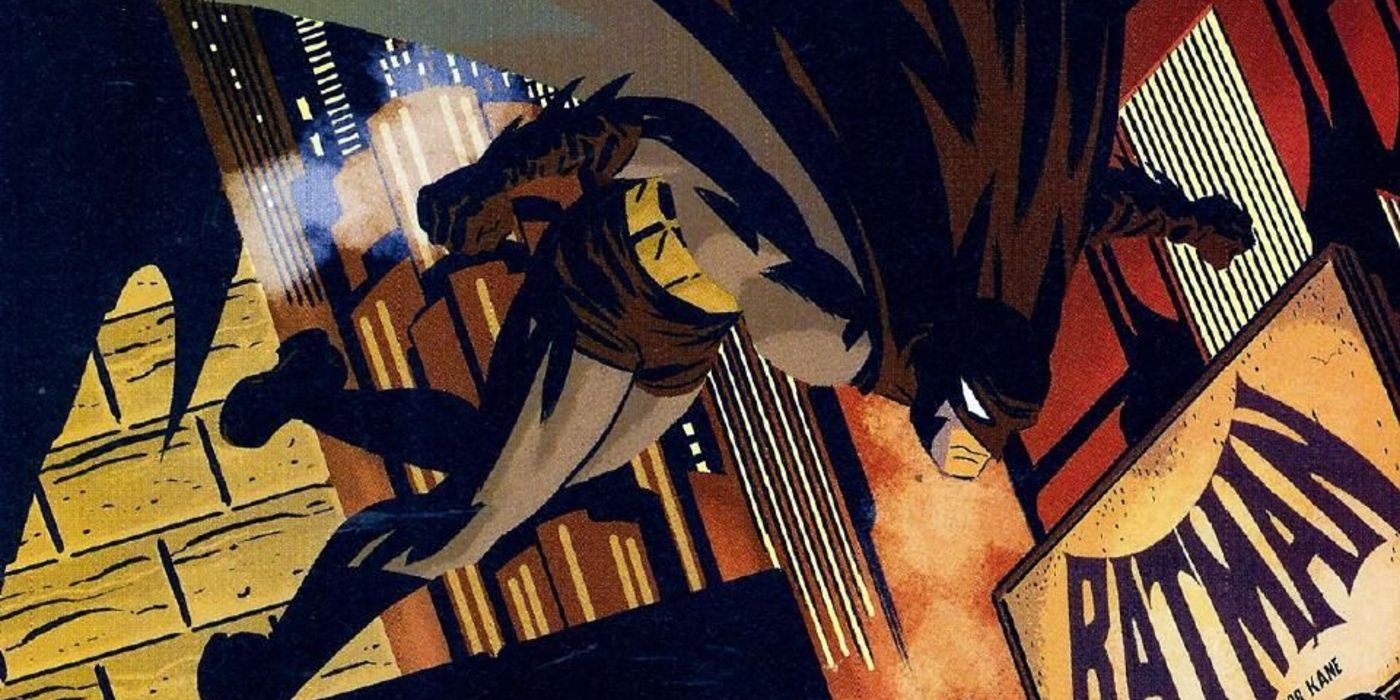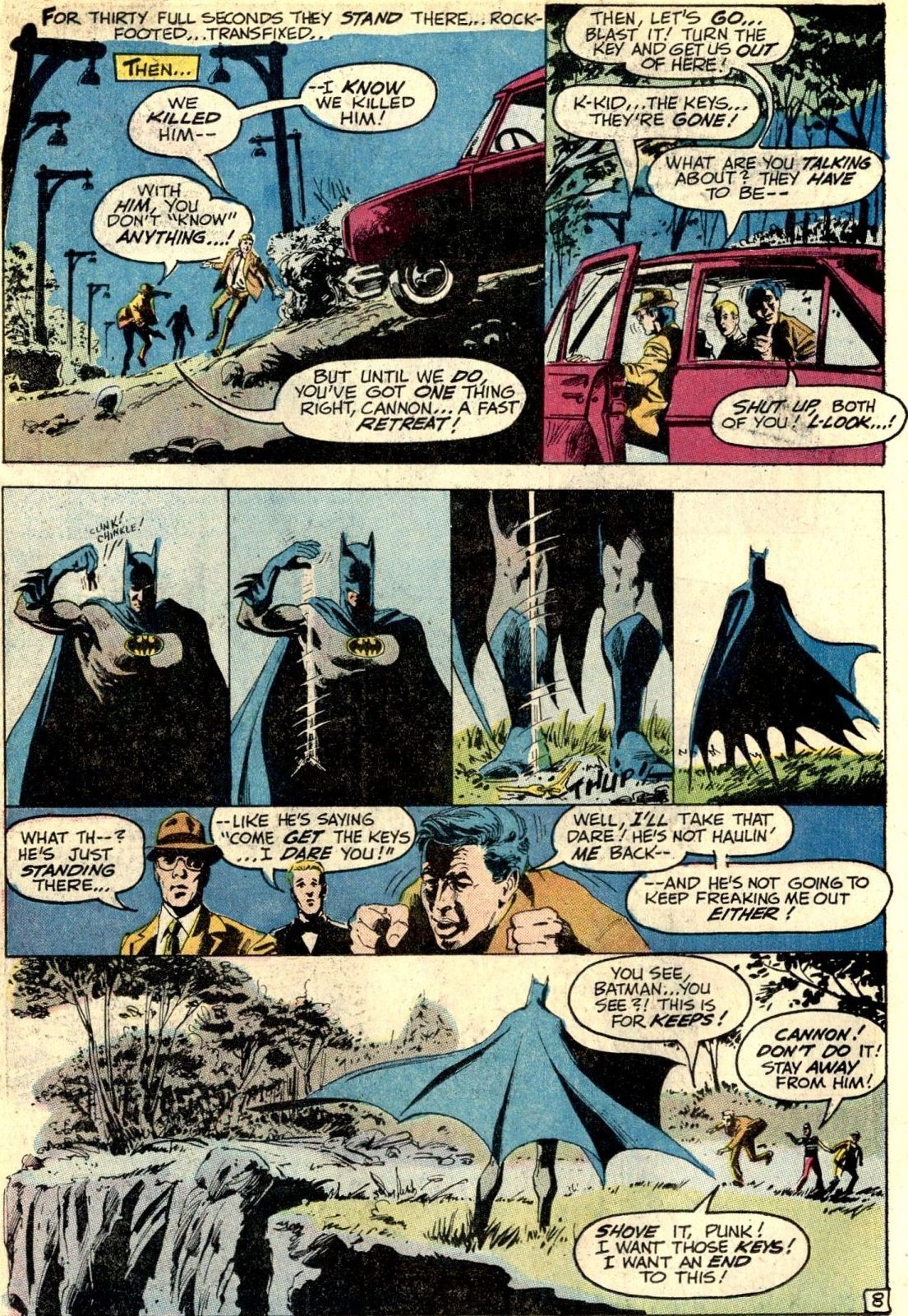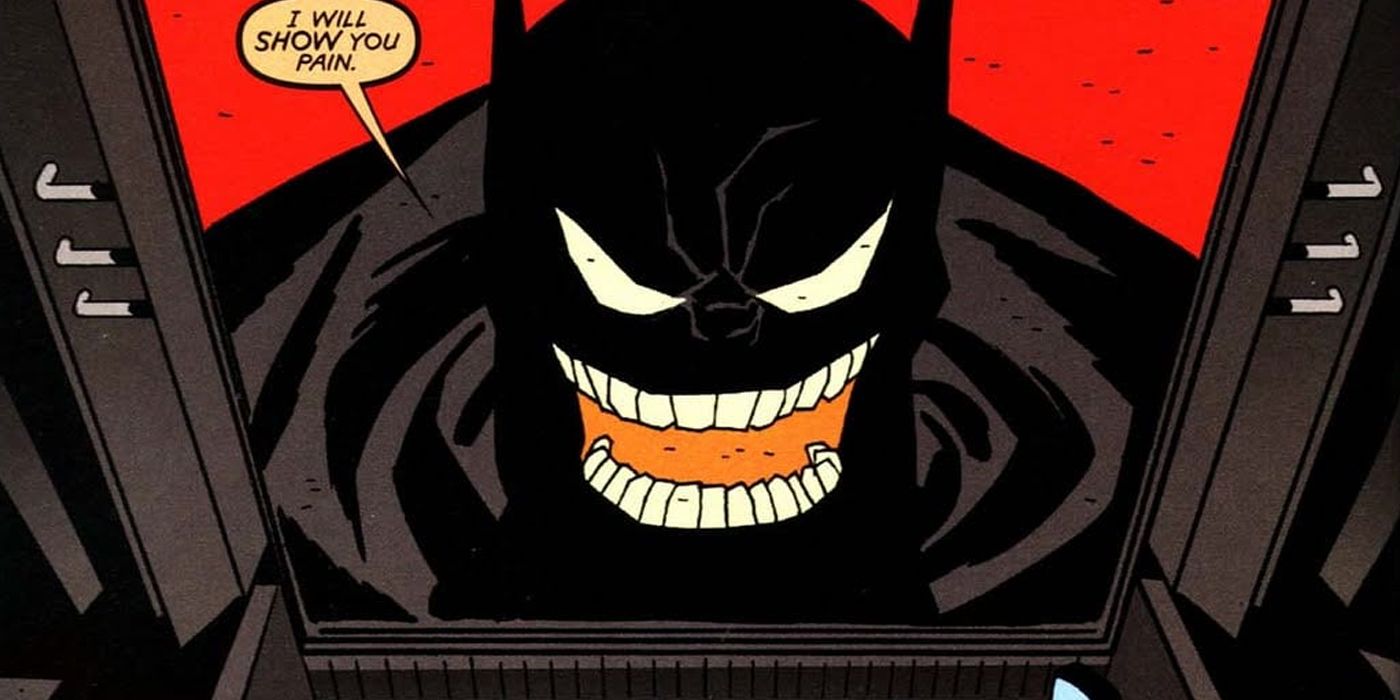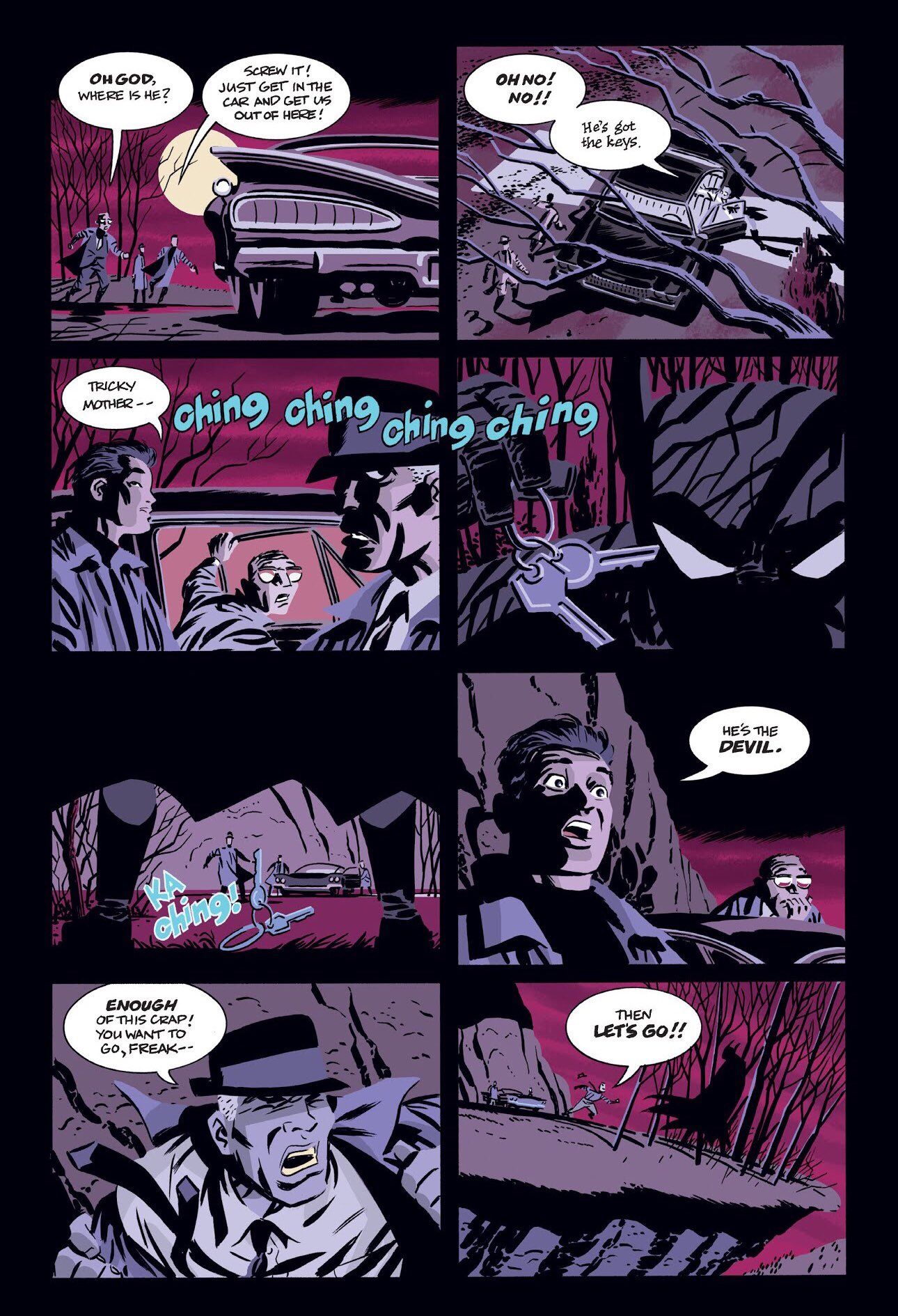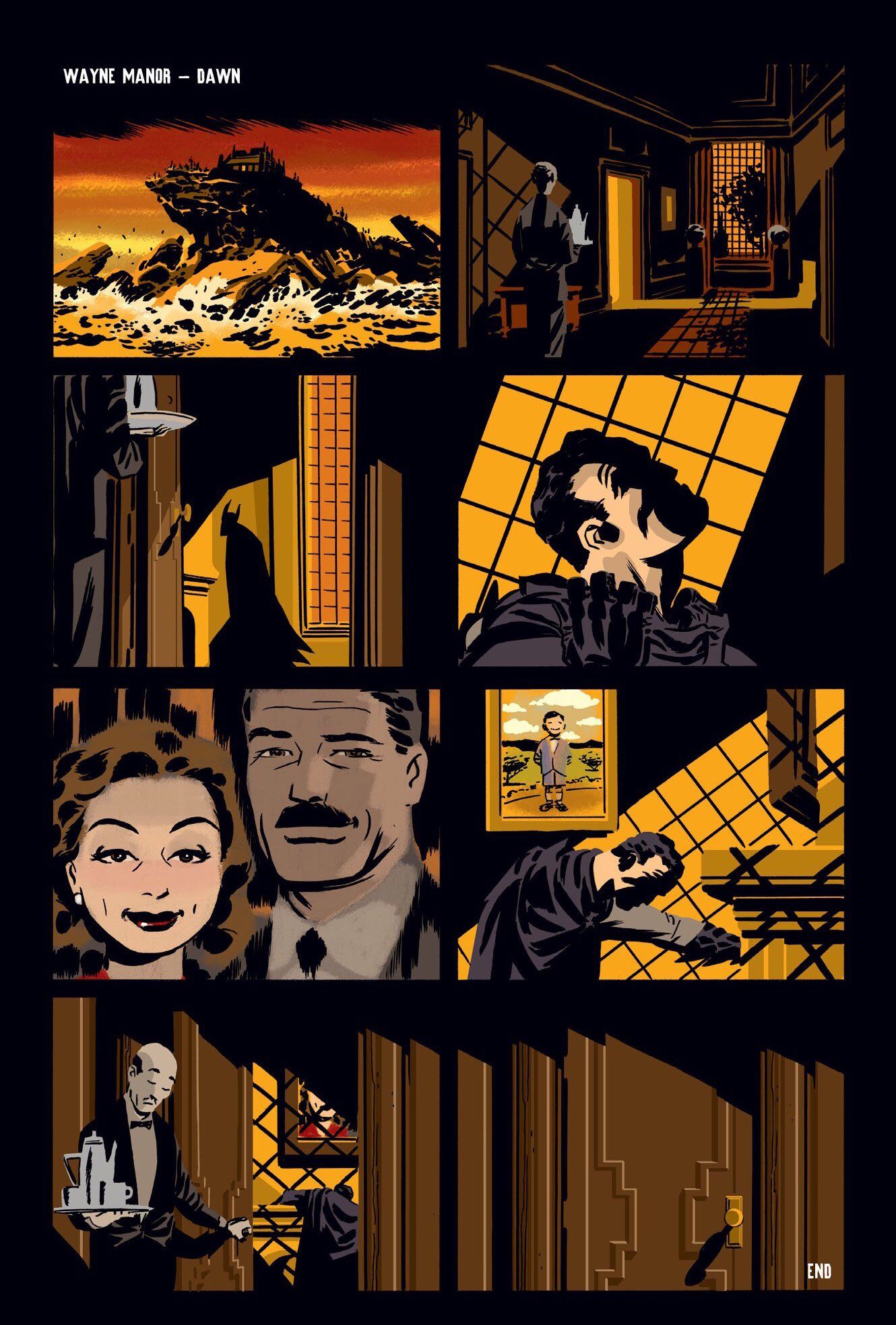Welcome to a special Adventure(s) Time's installment, a look at animated heroes of the past. This week, a moody piece from the legendary Darwyn Cooke that was originally rejected by DC. And if you have any suggestions for the future, let me hear them. Just contact me on Twitter.
Batman: The Animated Series is famous not only for creating a timeless interpretation of Batman and his cast of villains, but also for the talent working behind the scenes. One of those animators was Canadian cartoonist Darwyn Cooke. Only a week into buying comics at the age of 13, Cooke purchased Detective Comics #439, featuring the story "Night of the Stalker." From that day, Cooke was convinced he'd found his calling.
"Night of the Stalker" is a legendary story officially credited to writer Steve Englehart and artist Sal Amendola. (The idea was from Neal Adams, and the plot's from Sal Amendola and his brother Vin, uncredited in the comic.) The story has the Dark Knight witnessing a horrific crime that triggers a flashback to the murder of his parents.
Although the story is awash with 1970s purple prose, Batman himself remains silent throughout the narrative, a ghost figure stalking the criminals. It was an unusual take on Batman from this era, which was undoubtedly moving away from the Adam West days, but still portraying the Caped Crusader as the hero of the stories, not some specter lurking in the periphery.
Here's a blurb from Englehart on the story from Englehart's website:
If I had only been involved with this one Batman story, I'd probably still have some recognition for the character. "Night of the Stalker" began as an idea by Batman artist extraordinaire Neal Adams, who talked it over with young artist Sal Amendola and Sal's brother Vin. Sal drew it up and asked me to dialogue it. The idea was that the Batman would not say a word throughout, so of course I soon decided he needed to say a few words. Fortunately, editor Archie Goodwin cut all that out. But my narration at the end stayed in, and it remains some of my favorite writing, as I played off Sal's beautiful storytelling.
Inspired by the story to pursue comics, Cooke did brief work for DC in the late 1980s, including a five-page crime story in New Talent Showcase #19, which was actually edited by "Night of the Stalker" artist Sal Amendola. Disappointed by the low page rate, Cooke left comics to work in Canada as a magazine art director, and graphic and product designer for the next 15 years. Eventually, Cooke even established his own design studio.
In the early 1990s, Cooke reconsidered comics, but his work wasn't deemed commercial enough for the major publishers. Eventually, he was hired by Warner Bros. Animation after replying to an ad for storyboard artists in The Comics Journal placed by Batman: The Animated Series co-creator Bruce Timm, who was looking for artists with comics credibility. Cooke submitted 14 pages of Batman material that would eventually be repurposed in 2000 as Batman: Ego. Interestingly, that graphic novel is now listed as an inspiration for Matt Reeves' upcoming film The Batman.
Cooke's work for the DC Animated Universe included episodes of Superman: The Animated Series, The New Batman Adventures, and Batman Beyond. Cooke even designed and animated the opening sequence for Batman Beyond.
While working on the cartoons, Cooke and Timm created a comic, believed to be submitted to DC as an inventory issue or special for Batman Adventures. (Fans assume this, as Adventures was set in the world of the shows Timm and Cooke were working on. Cooke also said it was drawn in the "Adventures style.") What we do know for sure is that the story was an homage to Cooke's beloved "Night of the Stalker," with Timm writing and Cooke penciling.
Initially launched as a miniseries before it was promoted quickly to an ongoing title, Batman Adventures earned a reputation as perhaps the best interpretation of Batman on comics stands in the '90s. Creators Kelley Puckett, Mike Parobeck, Rick Burchett, and Ty Templeton developed an acclaimed tie-in to Batman: The Animated Series.
Bruce Timm's occasional contributions with writer Paul Dini were Eisner Award-winning pieces that earned near-universal praise. Frank Miller even dubbed their collaboration Mad Love one of his favorite Batman stories ever.
In spite of this critical reputation, DC felt Cooke and Timm's story just wasn't what they wanted. The comic was placed in the drawer and apparently forgotten by all involved. Circa 2005, however, Cooke's name had grown in comics circles, leading DC to approach him about creating an issue of their ongoing Solo series, a title dedicated to creators with unique visions. An updated version of Cooke's story, titled "Déjà Vu," ran in Solo #5. Here's Cooke explaining the origin of the piece, from his introduction to the Batman: Ego & Other Tails collection:
When it came time to do Solo, I knew I wanted to do that story. When I pulled [Déjà Vu] out, I saw how much different it looked from my current work and decided to start from scratch. I talked to Bruce [Timm] to tell him I hoped he didn't mind, but I really wanted to rewrite the story so that my issue of Solo could be truly solo. Bruce was cool about that and I dove into the work. I did keep a couple of Bruce's lines, though...
Notice that Cooke's art had evolved over the years away from the strictly Bruce Timm-influenced Batman. His version had more demonic ears and a leaner frame, suiting "Déjà Vu" perfectly. And it doesn't seem as if Cooke's original version in the animated style has ever been released publicly.
The piece has been labeled a modern masterpiece, and some view it as their favorite Batman story. In 2006, Solo #5 won an Eisner Award for "Best Single Issue." Cooke's version nixes the omniscient narration, instead allowing visuals and the noir-ish dialogue amongst the increasingly unhinged gangsters to tell the story. The colors are stark, moody, and the use of shadow is impeccable. The closing page, now totally silent, is one of the most haunting images you'll find in a Batman story.
Not only is the story a tribute to a seminal work from Cooke's childhood, but he also restored the original creator's intended title. "Night of the Stalker" came from the editor, but Sal Amendola always wanted to call the story "Déjà Vu."
Hey, my latest paranormal novel Love is Dead(ly) is now on Kindle Unlimited! Find out what happens when a cocky psychic finds himself trapped in the afterlife with the ghosts he's been chasing!
0 Links

